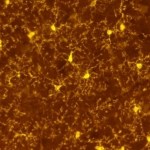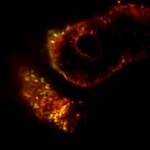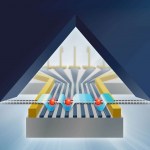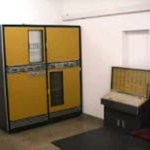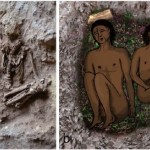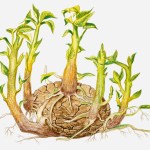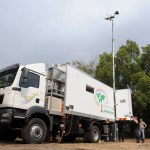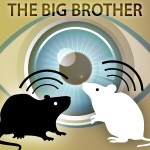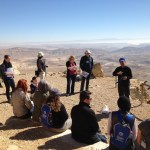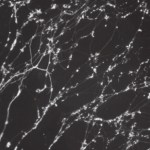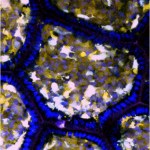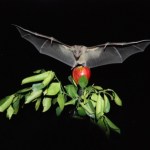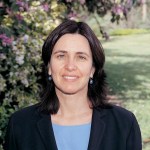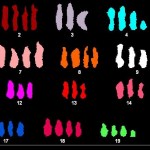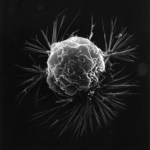basic research
Prof. Mario Livio takes the long view on science. In his newest book, Brilliant Blunders, he points out some of the mistakes made by some icons of science -- Einstein and Pauling among them. More importantly, he insists that researchers must be free to make mistakes.
Livio recently gave us a taste of his subject matter in a talk at the Weizmann Institute (in English):
http://www.youtube.com/watch?v=sYaMlTn275A
More science-themed haikus. I seem to keep writing them because we tend to put out three “mini press releases” at a time (a relic of the days when they were printed on two sides of a fold-up page and mailed). So I could pick just one to blog about, or I could try to fit all three into one post (which tends to get muddled when it is on subjects as varied as physics, neurobiology and genetics). Or else I can leave these little breadcrumbs inviting you to follow them back to our website, where the fuller explanation awaits (or, from there, you can follow the links in the releases to get to the…
In the future, stem cells created from our own skin cells will be used to renew damaged organs or grow new ones. We know this promise has often been made before, but the latest research in the lab of Dr. Jacob (Yaqub) Hanna is producing some solid findings that may make you believe in the possibility.
Just a little over a month ago, we reported that Hanna and his group had discovered a “brake” that keeps our cells from easily reverting to an embryonic-stem-cell-like state (induced pluripotent stem cells, or iPS cells). Removing that brake enabled them to ramp up the conversion process – in…
Of the four new articles online on our website, three happen, purely by accident, to be on physics research. The three are very different, and yet each is an illustration of the ways that basic physics research changes our world – in small and large, practical and enlightening ways. And each is situated at a different intersection between the technological and the theoretical – a technological breakthrough that resulted from a successful attempt to provide proof for a theoretical construct, new inventions based on elementary physical principles of light, and a theory substantiated through a…
Here is a photo of one of the Golem computers on which Arieh Warshel and Michael Levitt -- this year's Nobel Prize in Chemistry winners, along with Martin Karplus -- did much of their original work.
Golem computer
My dad was a computer programmer at that time, so I have some idea of what their work must have entailed. To this science writer, that makes their feat nothing short of amazing.
The Golem, by the way, which is preserved in the basement of the Weizmann Institute's mathematics building, was not the first computer at the Institute. The WEIZAC (below) was built at the…
First, there was the great hope of induced pluripotent stem cells (iPSCs), and then there was the inevitable letdown. When the announcement came, in 2006, that simple adult skin cells could be reprogrammed – reverted back to an embryonic stem cell state by the addition of just four genes – it seemed like an almost magical solution to the problems of using stem cells from embryos. But then some studies started to find that the reprogramming process was not perfect – iPSCs were similar, but not identical, to the cells from early embryos. More critically, only about 1% of the cells treated with…
Last month we reported on the first people who, around twelve thousand years ago, were lining their loved ones’ graves with flowers. This month, we have a piece on the “extinct” frog that was “resurrected” and then discovered to be a living fossil.
Both of these studies were led by Israeli researchers from other institutions. The Weizmann contributions were what you might call technical: precise radiocarbon dating and x-ray micro-tomography. While the findings, themselves, were publicized in many scientific and popular publications, the technological advances that make these findings possible…
Since the haiku post was well received, and since we have another three pieces online today – each on a different finding and each interesting in its own right – I have decided to return to the haiku format. Among other things, there is something quite satisfying about distilling complex scientific findings down to 17 little syllables – like writing the perfect tweet, but more so.
In any case, follow the links to read more:
A burst of enzymes:
A transcription traffic jam
Watch for gene speed bumps
Genetics can rid
The poison from potatoes
Or add it elsewhere
image: Thinkstock…
Right above the tree tops -- where most people might think there is just air -- Prof. Dan Yakir sees a distinctive atmospheric layer in which all sorts of complex exchanges are taking place. CO2, of course, is one of the important ones, and we still don’t understand all of the ins and outs of its flux through the forest, soil and atmosphere. Moisture, heat (and by extension light) and oxygen all cycle through the interface between the forest canopy and the lower atmosphere, as do a number of volatile organic compounds (VOCs) released by many trees. These compounds may contribute to the…
Take a bunch of peculiar individuals, put them all together in one setting; film their every move, every second of the day. Sound familiar? Dr. Tali Kimchi is explicit about the resemblance of her experiments to a well-known reality TV show. The difference, of course, is that Kimchi’s subjects are mice. She places large groups of animals in a common pen in her lab, which is fitted out with video cameras, infrared lighting for nighttime filming and electronics to continuously record information from the ID chips implanted in each mouse. And while no one can deny that our enjoyment at seeing…
The world – or at least a large swathe of Israel – was their classroom. An unusual international conference for science teaching experts started out at the Clore Garden of Science, on the Weizmann Institute campus. From there the “nomadic” conference made its way down to Eilat at the southern tip of the country, Jerusalem in the east and points in between.
Outdoor Learning Environment conference at the Ramon crater
Participating in the first international Outdoor Learning Environment conference were science education researchers from the US, UK, Canada, Denmark, Germany, Sweden, Portugal,…
To attain knowledge, add things every day. To attain wisdom, remove things every day.
Lao Tsu
Apparently our nervous systems develop according to the Chinese philosopher’s principle of being and not being. As our nerve cells grow, they send out long extensions – axons – throughout the developing tissues. And as they reach out, some are also pruned back. The configuration of nerve endings we finally possess depends on both what was added and what was removed.
Which axons will complete their developmental journeys and which will be pruned back? For some, it is simply a matter of fate.
But in…
Have you complained about the weather recently? On the gas giants at the edges of our solar system, Uranus and Neptune, hurricane-like storm systems as big around as Earth blow 1000 km/h winds for years on end.
Voyager II image of Neptune, showing storm features. Image: NASA
But wait…What exactly constitutes weather on a giant gas planet? Here on planet Earth, there is a clearly delineated gas layer enveloping the solid/liquid layer we call home. Our weather arises from our planet’s rotation and the solar heating of its surfaces. On a rapidly-rotating gas planet (a day on Neptune is 16…
Poetry is finding its way into our consciousness at the Weizmann Institute: At the recent, fourth annual Science on Tap evening, which the Institute hosts in Tel Aviv, several poets joined in the fun, reading from their work before and after the talks given by scientists in over 60 filled-to-capacity pubs and cafes around the city. And calls have gone out for entries to the Ofer Lider creative writing contest – open to scientists (writing in Hebrew). The contest is named for Prof. Ofer Lider, an Institute scientist who, sadly, died young and who wrote poetry because he believed that…
When we navigate through our environment, do we track mostly in two dimensions or in three? Clearly, we can move in all three dimensions, but does our internal map relate to the vertical direction in the same way as it does to the horizontal axes on the ground?
That question has not yet been definitively answered, but recent research on flying bats shows us what three-dimensional navigation looks like in the brain.
It turns out that fruit bats also mostly navigate in two dimensions, since quite a bit of their flying time involves getting from their caves straight to their favorite fruit…
Prof. Shafi Goldwasser, who is at both the Weizmann Institute and MIT, will receive the 2012 A.M. Turing Award, together with Prof. Silvio Micali of MIT. Goldwasser is only the third woman to receive the Award since its inception in 1966, and she is the third faculty member of the Weizmann Institute to receive what is considered to be the “Nobel Prize in computing.”
Goldwasser and Micali’s work in the 1980s laid the foundations of modern cryptography – the science that, among other things, keeps your electronic transactions secure.
The basis of their work is a series of riffs on the…
Happy International Women's Day. In the midst of today's hand wringing about women in science, here's some good news: The Weizmann Institute has just been awarded a prize by the City of Barcelona for its efforts to promote women in science. Above: Barcelona Civil Rights councilor Francina Vila i Valls presents the award to the Institute's Dr. Karina Yaniv.
The centerpiece of this effort is the Israel National Postdoctoral Program for Women in Science, which gives grants, on top of the postdoctoral scholarships these women receive, specifically to enable them to move their families abroad…
Another advance in cancer research is featured on our website this week. Among other things, this one highlights the dangers of assuming causation from correlation. Prof. Dov Zipori and his team were looking at adult stem cells in the bone marrow. These hold a lot of potential for treating many kinds of disease but, like many kinds of stem cells, there is a risk of these cells differentiating into cancer instead of the intended normal tissue replacement. The idea was to find a marker that could tell which cells were more likely to turn cancerous, thus making the use of these stem cells safer…
New research at the Institute may offer a sliver of hope for treating “triple-negative” breast cancer. “Triple-negative” refers to the fact that the breast cancer cells are missing the three different receptors targeted by the currently available drugs, for instance Herceptin and steroid hormone blockers. This type of cancer also tends to be fairly aggressive, and the risk of early recurrence is higher than for other types of breast cancer.
Triple-negative breast cancer cells do have other receptors – particularly EGFR, a growth factor receptor that would seem to be a good target for…
What happens when a former physics-student-turned-documentary-director is invited to create a video clip for the first ever physics reunion? The answer is below.
You may not learn anything new about physics by watching it, but you will note that Weizmann President Prof. Daniel Zajfman and VP Prof. Israel Bar-Joseph are featured, along with others.
Touching Something No One Found
